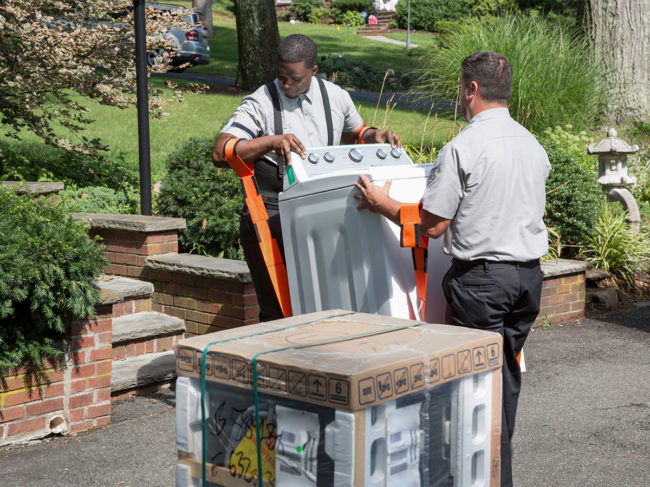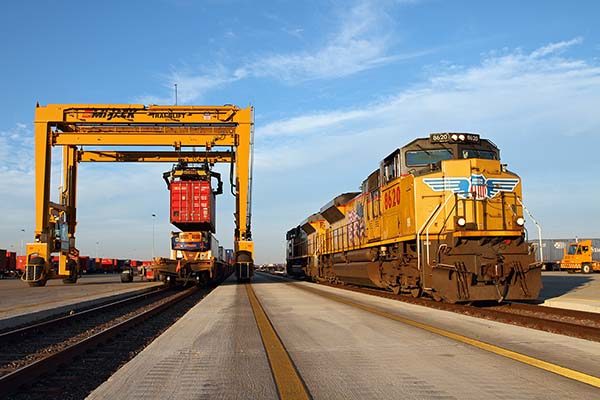Gary Frantz
Gary Frantz is a contributing editor for DC Velocity and its sister publication CSCMP's Supply Chain Quarterly, and a veteran communications executive with more than 30 years of experience in the transportation and logistics industries. He's served as communications director and strategic media relations counselor for companies including XPO Logistics, Con-way, Menlo Logistics, GT Nexus, Circle International Group, and Consolidated Freightways. Gary is currently principal of GNF Communications LLC, a consultancy providing freelance writing, editorial and media strategy services. He's a proud graduate of the Journalism program at California State University–Chico.
ARTICLES
SUSTAINABILITY
Transportation companies face new carbon-reporting mandates as well as increased scrutiny from investors, shippers, and consumers concerned about their eco-impact. What’s a transportation provider to do?
Read More
3PL
Bruised and battered, post-pandemic supply chains look to 3PLs to ease the pain
Persistent inflation, bloated inventories, and shifting supply chain strategies all are conspiring to upend carefully crafted supply chains—and put fresh pressures on 3PLs to deliver solutions.
Read More
Motor Freight
Weak demand, light volumes foreshadow continued challenges for truckers
It’s a mixed bag for truckers. Truckload spot rates continue to bounce along the bottom, while contract business is struggling to hold its own. And while Yellow’s bankruptcy boosted the LTL market for a time, last year’s freight recession continues to linger. Are there any green shoots out there?
Read More
TRANSPORTATION MANAGEMENT SYSTEMS
Technology providers hark back to the future as truckers and shippers refocus on the basics
While freight tech’s innovation boom is still going strong, users want their transportation management systems to deploy faster, integrate easily with new apps, and drive more savings through basic freight operations management.
Read More
TRANSPORTATION REPORT: LAST-MILE DELIVERY
Last-mile business, while down from the pandemic peak, sees slow but steady growth ahead
Providers adapt as shippers look to balance the pandemic-driven “get it there now” mentality with a sharper focus on costs—and service alternatives.
Read More
2024 LOGISTICS OUTLOOK
A new outlook that’s a lot like the old outlook
Growth in the freight and logistics markets stalled in 2023 owing to overstocking, weak demand, and excess capacity. Expect more of the same in 2024.
Read More
PARCEL EXPRESS
Beset by loose capacity and weak demand, where do parcel express carriers go from here?
Shippers are regaining pricing leverage as an uninspiring peak season has carriers pining for pandemic-era volumes.
Read More
INTERMODAL/RAIL
Peak season for intermodal arrives with a whimper, as slack demand depresses volumes
Rail container and trailer volumes are down over 9% from last year, and there’s little prospect of relief so long as domestic destocking continues and international ocean traffic remains soft. Oh, and analysts see no uptick until late 2024.
Read More
Transportation
Loose capacity, weak demand, flat rates combine with persistent inflation to pressure truckers
The bankruptcy of Yellow gives remaining LTL carriers a temporary uptick in freight, but fundamental market challenges remain.
Read More
MARITIME/PORTS
Maritime operators, ports, take a step back as slack demand, destocking depress volumes and rates
The maritime industry breathed a sigh of relief as West Coast ports inked a labor agreement. The next challenges: the effects of climate change, a tepid global economy, new environmental regs, and a looming capacity glut.
Read More
Copyright ©2024. All Rights ReservedDesign, CMS, Hosting & Web Development :: ePublishing










